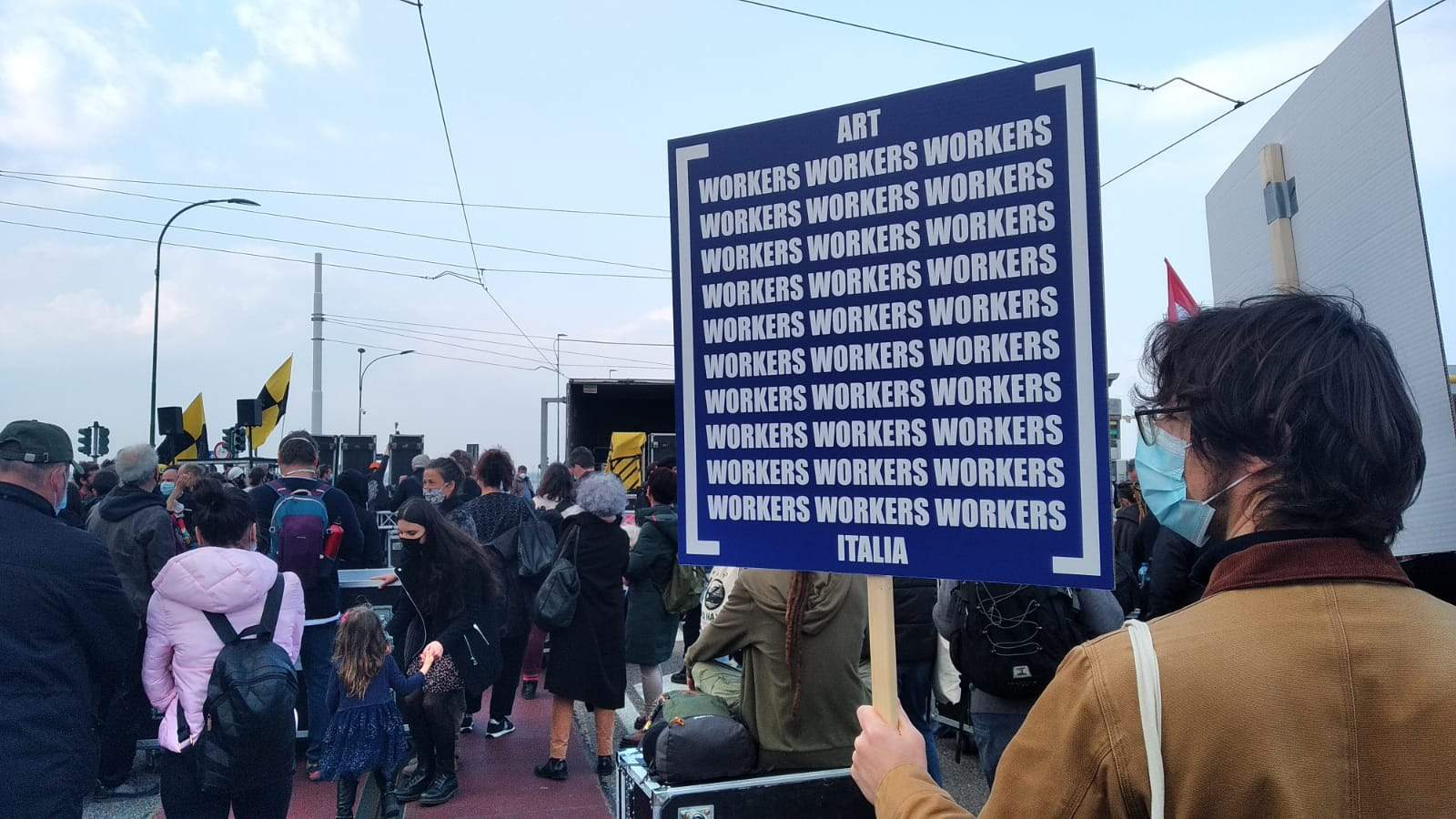Who are the men and women contemporary art workers in Italy? A survey conducted by AWI - Art Workers Italia, the first association of contemporary art workers, founded in 2020, and ACTA - Freelance Association has photographed the sector with a quantitative and qualitative analysis of the working conditions of Art Workers from a social, contractual and legal point of view. The results of the survey, AWI and ACTA point out, sketch a scenario characterized by the presence of workers who were mostly born in the 1980s and 1990s, mostly women, with a very high level of professionalism, passionate about their work, and employed in extremely demanding activities. However, incomes from these activities are often insufficient to ensure adequate support, despite the actual hours in which female workers are engaged and their degree of professionalization.
The survey was conducted through 440 interviews, focusing on a sample characterized by female workers born mainly in the 1980s and 1990s. 60.5 percent are women, 31.5 percent are men, and 8 percent preferred not to respond or do not recognize themselves in binary divisions. Respondents have a very high level of professionalism (85.9 percent have a master’s degree or higher, of which 27.8 percent the studied abroad), say they are passionate about their work, and engaged in very intense activities. However, in most cases they have unstable contracts and thus little or no protection, as well as incomes not commensurate with the skills they possess and often totally inadequate to ensure survival. This is why the vast majority of them (81 percent) are forced to work multiple jobs, both in contemporary art and in other fields (39.8 percent).
Most respondents work mainly as artists (36.7%), 14.9% work in curating, 10.2% in academia (lecturers and researchers), 10% in production (producers, project managers, coordinators), 9.4% in communication (press office, social management, graphic design and illustration), 6% work mainly as technicians (exhibition designers, studio assistants’artists, art craftsmen, photographers and videomakers), 5.7 percent as museum educators or cultural mediators, 5.4 percent in business (galleries, advising), or as art writers (3.6 percent). Finally, 1.2% work in archives and conservation. Respondents live mainly in large cities, and show a high concentration in regions such as Lombardy (28.75%), Lazio (12.5%), Piedmont (11%), Emilia-Romagna (9.25%), Veneto (8.5%) and Tuscany (8.25%). The most common fiscal tool is VAT number (36.2%), followed by salaried contract 23.5% (15.5% a permanent and 8.8% a fixed term), occasional service/copyright assignment (19.7%), while 6% say they do not primarily use any contractual mode (moonlighting), a percentage to which is added a 36.6% of workers who use it as a secondary mode.
Nearly half of the respondents (the figure refers to 2019 but does not change substantially in 2020) made an income of less than 10,000 euros annually, and another 24 percent made an income between 10 and 20,000 euros; only 8.4 percent exceeded 30,000 euros. According to AWI, there are multiple factors contributing to explain the paltry incomes: these are partly due to the discontinuity of work and low compensation. Two other elements also emerge, two distortions that seem to play a very significant role in this area: the prevalence of free and deregulated work and the lack of economic recognition of important phases of the activity. In fact, while almost 60% of respondents work from 40 euros per week and up (and, moreover, by law, the maximum weekly working time is 48 hours including overtime), only 11.8% of respondents say they receive daily compensation of more than 100 euros, 28% work for 50-100 euros per day and 30% for less than 50 euros, due to the lack of contractual constraints (and the absence of a legal minimum wage). In addition, only 30% of respondents say they are paid for all assignments and only 34% say they are paid for the majority of them. The remaining 36 percent are paid for only less than half of the assignments or none at all, a factor to which widespread deregulation certainly contributes: in fact, about 55 percent of the work performed in 2019 was not regularized by written contracts. This is also a major contributor to explaining low incomes.
Finally, the data show that among the phases of work, only the execution part is generally recognized and paid for by the client, although design and training are equally time-consuming for respondents. In fact, only 20 percent of female art workers say they are paid for all the hours of work required to perform their profession. Average annual income increases as economic recognition increases at different stages of work, this relationship is particularly evident for the design and coordination and administration stages. Among the main difficulties encountered by female workers in the performance of their professions were identified as the inability to enter into formal contracts prior to the start of the assignment and consistent with the tasks performed; obtaining compensation commensurate with the time devoted, tasks and skills required; and making up for the lack of adequate welfare. In conclusion, professionals pertaining to the field of contemporary art show that they are poorly protected and represented, 88 percent are not, in fact, members of a trade union or professional association.
 |
| In contemporary art, many skilled workers (especially women) but earn little: survey |
Warning: the translation into English of the original Italian article was created using automatic tools. We undertake to review all articles, but we do not guarantee the total absence of inaccuracies in the translation due to the program. You can find the original by clicking on the ITA button. If you find any mistake,please contact us.